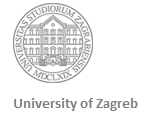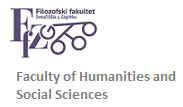Course title: The Nineteenth-Century American Novel
Instructor: Assoc. Prof. Jelena Šesnić
ECTS credits: 6
Language: English
Duration: Semester 3 to 6
Status: elective
Course description: The novel figures as one of the key literary genres in the development of US national literature. The course proposes to chart a development and diversification of the American novel in the nineteenth century, as it sustains the idea of American specificity on one hand, while, on the other, reflects derivation from and postcolonial cultural dependence on the European (English) literary models. The growing sense of American cultural consciousness will be traced on the exemplary novels in the course of the 19th century that are still important cultural landmarks. In addition, the development of the novel suggests changes of literary styles and periods ranging from neo-classicist to romantic to realist and beyond. At the same time, these novels exemplify the most common sub-genres of the American novel at the time. The proposed primary texts include: Herman Melville’s Moby Dick (romance/ the philosophical novel; with some ommissions); E . A. Poe’s The Narrative of Arthur Gordon Pym (the adventure/ gothic novel); Harriet Beecher Stowe’s Uncle Tom’s Cabin (the sentimental novel); and William Dean Howell’s A Hazard of New Fortunes (the realist novel).
Reading:
The novels (listed above)
Criticism, prefaces, reviews, manifestoes:
– Emerson, Ralph Waldo. “The Poet“
– Hawthorne, Nathaniel. Prefaces (selection)
– Howells, William Dean. “A Call for Realism“
– James, Henry. The Art of the Novel (selection); The American Scene (selection)
– Melville, Herman. “Hawthorne and His Mosses“
– Twain, Mark. “James Fenimore Cooper’s Literary Offenses“
– Buell, Lawrence. “The Unkillable Dream of the Great American Novel: Moby-Dick as Test Case“. American Literary History 20. 1-2 (Spring-Summer 2008): 132-55.
– Chase, Richard. The American Novel and Its Tradition. New York: Doubleday Anchor Books, 1957. 1-28.
– Cheyfitz, Eric. „A Hazard of New Fortunes: The Romance of Self-Realization“. American Realism: New Essays. Ed. Eric Sundquist. Baltimore, London: The Johns Hopkins UP, 1982. 42-65.
– Goddu, Teresa. Gothic America: Narrative, History, and Nation. New York: Columbia UP, 1997. (selection)
– Jehlen, Myra. «The Novel and the Middle Class in America». Ideology and Classic American Literature. Eds. Sacvan Bercovitch and Myra Jehlen. Cambridge: Cambridge UP, 1986. 125-44.
– Tompkins, Jane. Sensational Designs: The Cultural Work of American Fiction, 1790-1860. New York, Oxford: Oxford UP, 1985. 122-46.
Additional reading:
– Armstrong, Nancy and Leonard Tennenhouse. “The American Origins of the English Novel“. American Literary History 4.3 (Autumn 1992): 386-410.
– Buell, Lawrence. “American Literary Emergence as a Postcolonial Phenomenon”. American Literary History 4.3 (Autumn 1992): 411-42.
– Castronovo, Russ. Beautiful Democracy: Aesthetics and Anarchy in a Global Era. Chicago: U of Chicago P, 2007. (selection)
– Fisher, Philip. Hard Facts: Setting and Form in the American Novel. Oxford: Oxford UP, 1986. (selection)
– Frye, Northrop. Anatomy of Criticism. Princeton: Princeton UP, 1957. (selection)
– Marx, Leo. The Machine in the Garden: Technology and the Pastoral Ideal in America. Oxford: Oxford UP, 1964. (selection)
Requirements: Regular attendance and active participation in the seminar (10 % of the grade); oral presentation (10% ); seminar paper (30 %); written tests (mid-term and final: 50 %). Seminar grade is based on continuous assessment comprising all the above elements.



